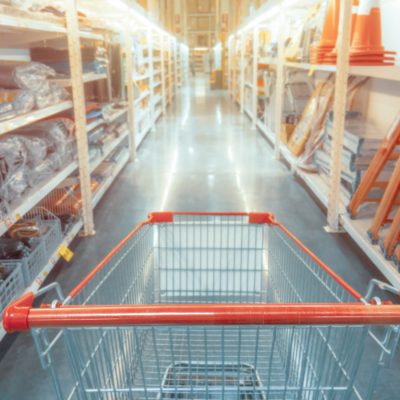More and more, we’re encountering references to the light at the end of the tunnel. While we’re not out of the pandemic woods yet, there is a sense of settling around much of the world. Life hasn’t returned to normal, but a sense of normal has returned to life. In other words, the pandemic has changed us. It’s certainly changed the way we see and design public spaces. And as we all know, design trends are universal - what happens in commercial and hospitality design is reflected in residential trends, too. In particular, we’re noticing a few emerging qualities of flooring that are quickly becoming top priorities.
That’s right. Even flooring has been affected by COVID-19. The biggest beneficiary has been rigid-core and luxury vinyl tile (LVT) products, including planks and tiles. Not long ago, we covered flooring industry trends, notably the rise of resilient flooring and the popularity of rigid-core products within that category. Well, it seems that among the benefits of rigid core are being pandemic-proof. Let’s look at why that is.
Easy to Clean
Perhaps one of the biggest and most lasting changes of the pandemic is the increased focus we have on cleanliness. We’ve all become germaphobes. Cleaning routines have become way more rigorous in schools, restaurants, hotels, grocery stores, and anywhere else where people come and go. More and more people are choosing flooring that can be cleaned thoroughly and repeatedly. Rigid-core products like LVT are waterproof and scratch-resistant, so they can stand up to vigorous and inexpensive cleaning methods in ways that other flooring can’t.
Wayfinding
In case you missed it, there are floor graphics just about everywhere these days. With the need to keep people six feet apart for over a year now, the world has discovered that the floor can be used for communication and navigation. This new use has led designers to choose materials that are compatible with adhesives and easy to replace. It’s also made more people look down, which leads to more flooring projects in general.
Compatibility
The pandemic has changed our attitudes about open floor plans, too. More than ever, we are wanting our space and wanting boundaries around those spaces. But walls aren’t always an option. Instead, we see flooring instances where carpeted offices transition to LVT high-traffic areas. You can see this in commercial spaces in particular, such as hospitals, medical offices, professional offices and corporate environments. Where LVT really has an advantage here is in the wide diversity of product styles. LVT goes well with everything.
Comfort
As we mentioned in a previous post about design trends for 2021, the pandemic has shifted tastes towards warmer, more natural materials. Rigid-core products have a real advantage because of the wide variety and competitive pricing. In high-traffic commercial spaces, LVT can deliver the warmth of wood and other natural products without the maintenance.
While the instances above reference public spaces, it’s easy to see how each of these qualities can be equally beneficial in the home. Indeed, it’s fascinating to see how the past year has changed the way we build our environments, all the way down to our flooring choices. What hasn’t changed is the fact that Eco Cork Foam is an ideal underlayment for most rigid-core products. It’s the only 10-in-1 waterproof underlayment for use with laminate, vinyl and wood floors. If you are among those interested in rigid-core flooring, it’s time you got to know Eco Cork Foam.
About Us
Eco Cork Foam Underlayment is manufactured in North Carolina by Palziv, North America. Palziv brings together world-class science and engineering to deliver innovative products, materials and services for the construction, building, automotive, recreational, medical and packaging industries. Every day, we strive to grow our community, working with others to seek sustainable, innovative, market-driven solutions that promote better, safer, and healthier lifestyles and protect the environment for generations to come.
Sources:
https://www.floortrendsmag.com/articles/106384-trends-in-hospitality-flooring
https://www.bdcnetwork.com/5-new-trends-commercial-flooring

